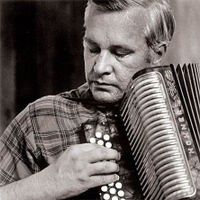Annotation:Bridal Festival Quadrille: Difference between revisions
(Created page with "=='''Back to [[{{BASEPAGENAME}}]]'''== ---- <p><font face="garamond, serif" size="4"> <!-- REPLACE THE ABC CODE BETWEEN THE <PRE> </PRE> TAGS --> '''BRIDAL FESTIVAL QUADRILLE'...") |
m (Text replacement - "garamond, serif" to "sans-serif") |
||
| Line 1: | Line 1: | ||
=='''Back to [[{{BASEPAGENAME}}]]'''== | =='''Back to [[{{BASEPAGENAME}}]]'''== | ||
---- | ---- | ||
<p><font face=" | <p><font face="sans-serif" size="4"> | ||
<!-- REPLACE THE ABC CODE BETWEEN THE <PRE> </PRE> TAGS --> | <!-- REPLACE THE ABC CODE BETWEEN THE <PRE> </PRE> TAGS --> | ||
'''BRIDAL FESTIVAL QUADRILLE'''. AKA - "[[Partie de Lancier (2)]]." French-Canadian, Jig. A Minor ('A' part), C Major ('B' part) and F Major ('C' part). Standard tuning. AA'BB'CC'A"A"'B"B"'C"C"'. Composed around 1910 by Edmond Beaudry as "The Bridal Festival Quadrille," it appeared in a violin manuscript. It is sometimes called “6/8 Gallant” or “Am-C-F,” and is occasionally played in the key of B Minor. | '''BRIDAL FESTIVAL QUADRILLE'''. AKA - "[[Partie de Lancier (2)]]." French-Canadian, Jig. A Minor ('A' part), C Major ('B' part) and F Major ('C' part). Standard tuning. AA'BB'CC'A"A"'B"B"'C"C"'. Composed around 1910 by Edmond Beaudry as "The Bridal Festival Quadrille," it appeared in a violin manuscript. It is sometimes called “6/8 Gallant” or “Am-C-F,” and is occasionally played in the key of B Minor. | ||
| Line 7: | Line 7: | ||
<br> | <br> | ||
</font></p> | </font></p> | ||
<p><font face=" | <p><font face="sans-serif" size="4"> | ||
[[File:Bruneau.jpg|200px|thumb|left|Philippe Bruneau (1934-2011)]] | [[File:Bruneau.jpg|200px|thumb|left|Philippe Bruneau (1934-2011)]] | ||
''Source for notated version'': Montréal, Québec, button accordion great Philippe Bruneau (Quebec) [Begin]. | ''Source for notated version'': Montréal, Québec, button accordion great Philippe Bruneau (Quebec) [Begin]. | ||
| Line 13: | Line 13: | ||
<br> | <br> | ||
</font></p> | </font></p> | ||
<p><font face=" | <p><font face="sans-serif" size="4"> | ||
''Printed sources'': Bégin ('''Philippe Bruneau'''), 1993; No. 29, p. 43 (appears as "Partie de Lancier"). Hart & Sandell ('''Dance ce Soir'''), 2001; No. 33, pp. 62-63 (a reprint of Bégin’s version). | ''Printed sources'': Bégin ('''Philippe Bruneau'''), 1993; No. 29, p. 43 (appears as "Partie de Lancier"). Hart & Sandell ('''Dance ce Soir'''), 2001; No. 33, pp. 62-63 (a reprint of Bégin’s version). | ||
| Line 19: | Line 19: | ||
<br> | <br> | ||
</font></p> | </font></p> | ||
<p><font face=" | <p><font face="sans-serif" size="4"> | ||
''Recorded sources'': <font color=teal></font> | ''Recorded sources'': <font color=teal></font> | ||
</font></p> | </font></p> | ||
Revision as of 11:46, 6 May 2019
Back to Bridal Festival Quadrille
BRIDAL FESTIVAL QUADRILLE. AKA - "Partie de Lancier (2)." French-Canadian, Jig. A Minor ('A' part), C Major ('B' part) and F Major ('C' part). Standard tuning. AA'BB'CC'A"A"'B"B"'C"C"'. Composed around 1910 by Edmond Beaudry as "The Bridal Festival Quadrille," it appeared in a violin manuscript. It is sometimes called “6/8 Gallant” or “Am-C-F,” and is occasionally played in the key of B Minor.

Source for notated version: Montréal, Québec, button accordion great Philippe Bruneau (Quebec) [Begin].
Printed sources: Bégin (Philippe Bruneau), 1993; No. 29, p. 43 (appears as "Partie de Lancier"). Hart & Sandell (Dance ce Soir), 2001; No. 33, pp. 62-63 (a reprint of Bégin’s version).
Recorded sources:
